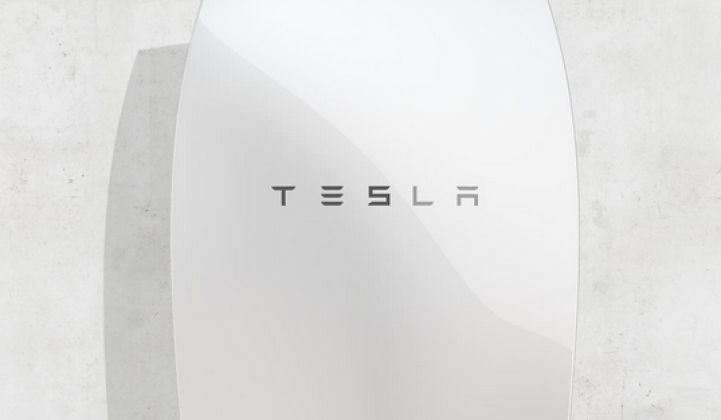Tesla is shipping its Powerwall battery system to early adopters in Australia, hoping to take advantage of the country's market conditions that make it ripe for storage growth.
Just a few days ago we reported that Sunverge -- already active in the Australian residential storage market -- pulled in $36.5 million from investors to help expand in the country.
The Australian utility AGL Energy has been selling Sunverge residential systems since November last year, and its $20 million cash injection is a positive sign for the market's potential.
Other competitors in the market currently include Panasonic, Samsung SDI, Enphase Energy, Magellan Power, AllGrid Energy, Zen Energy and SunEdison. Even telco Telstra is getting in on the act.
So Tesla’s Powerwall is one solution among many -- and a very recent arrival, with the first ever installation only taking place a few weeks ago.
It’s being sold (or in some cases will soon be sold) to the public via a range of dealers, including the solar arm of insulation company CSR Bradford, Origin Energy, Simply Energy, SunEdison Australia, and Sydney-based solar installer Natural Solar.
According to Natural Solar’s Managing Director Chris Williams, the Powerwall is an obvious choice for the market: “Tesla Energy has a clear advantage in both price and technology and is some years ahead of its competitors.”
Although Tesla's cost advantage has been challenged, the company's heavy marketing and public relations work seems to be paying off.
“Since Natural Solar announced we were an official installer of the Tesla Powerwall in December 2015, we have had an unprecedented amount of consumer interest in learning more about the product and solar solutions. This includes new customers, who don’t have any solar power currently in place, as well as people with a solar system installed already looking to arrange a retrofit for the Tesla Powerwall," Williams said.
Interest has only been amplified since the first Tesla Powerwall shipment arrived in Australia and the first installations commenced," said Williams.
Stuart Osbourne, spokesperson for installer Origin, also said he was fielding a lot of questions about Tesla's home batteries. “Origin has received a lot of interest in the Tesla Powerwall and our home energy solution. Thousands of Australians have already registered their interest, and we’ve been having some great customer conversations," he said.
In the longer term, Origin is looking to pair storage with existing solar installations, as well as offer a combined solar-inverter-Powerwall solution.
Like many in the industry, Williams and Osbourne believe that Australia is an ideal place for storage to expand.
“Australia has been a long-time leader of renewable energy, and over the past six years we have seen huge consumer and commercial uptake of solar. Aussies are open-minded when it comes to renewable technology and also environmentally aware, so it makes sense that we would be leading the charge into battery storage on both a home and commercial scale," said Williams.
Natural Solar is also targeting the commercial market. Tesla has a product for that sector, too -- the scalable 100-kilowatt-hour Powerpack, which Natural Solar is already offering to customers. “We see this as a real growth market and are fielding a strong number of inquiries. Installations will commence over the coming months,” said Williams. Origin is also looking into offering the Powerpack.
The future looks promising for storage in Australia -- and that’s due to a lot more factors than its legendary sunshine and high level of domestic solar penetration. High energy prices and low feed-in tariffs are also factors driving interest in more self-consumption, noted GTM Research’s Brett Simon.
Australia’s energy storage market is expected to grow 37-fold between 2015 and 2020, reaching an annual installation rate of 244 megawatts, said Simon. And the majority of market growth will occur in the behind-the-meter segment, accounting for 90 percent of total capacity installed between 2013 and 2020.
Looking further into the future, Bloomberg New Energy Finance is forecasting a staggering 33 gigawatts of battery storage to deployed in Australia by 2040, accompanied by 37 gigawatts of rooftop solar.



